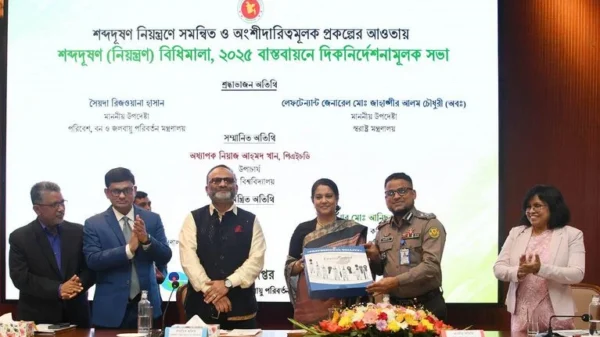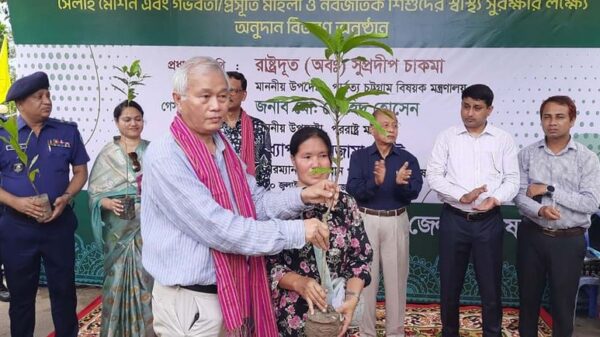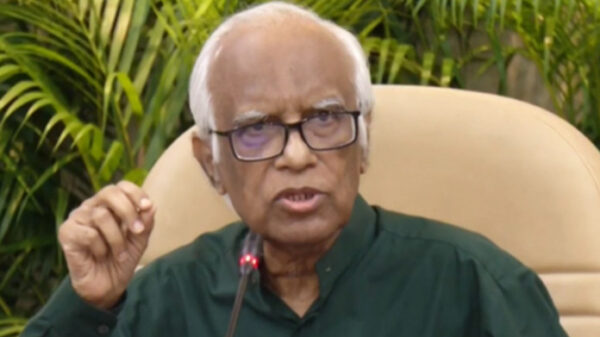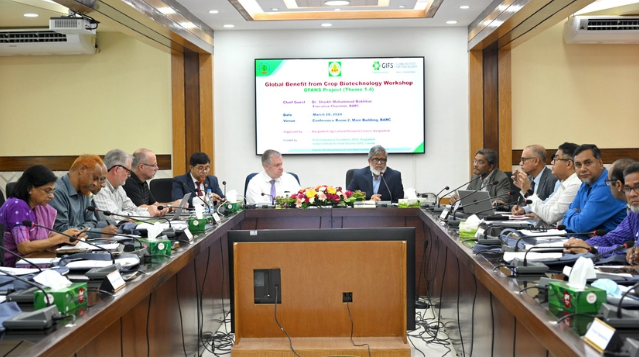Staff Reporter:
Bangladesh Agricultural Research Council (BARC) and Global Institute for Food Security (GIFS), University of Saskatchewan, Canada organised a day-long workshop.
The event titled ‘Global Benefit from Crop Biotechnology’ was held at the BARC conference room 2 at Farmgate in the capital on Thursday.
The workshop was arranged under the OMICS Food and Nutritional Security (OFANS) project, read a press release.
Dr Shaikh Mohammad Bokhtiar, executive chairman of BARC, attended as the chief guest, while Dr Steven Webb, executive director and chief executive officer of GIFS, Canada, and Dr Andrew G Sharpe, Bangabandhu Chair of GIFS, Canada, were present as guests of honour.
Member Director of BARC’s Natural Resources Management Division and Principal Investigator of the OFANS project (Theme 1.4 and 4.4) Dr Md Baktear Hossain delivered the welcome speech at the workshop.
Prof Dr Stuart Smyth, a renowned researcher and the Agri-Food Innovation & Sustainability Enhancement Chair at the University of Saskatchewan, Canada, delivered technical presentations in three sessions on Global Benefits from Crop Biotechnology, Global Biosafety Regulations, and the Intellectual Property (IP) landscape at the workshop.
In his speech as chief guest, Executive Chairman of BARC Dr Shaikh Mohammad Bokhtiar said there are various challenges in agriculture in Bangladesh including crop production on shrinking arable land, growing population and climate change.
“We have to face these challenges through the use of various modern technologies in agriculture.”
Currently, genome editing research continues to play an important role in the development of crop varieties worldwide.
He laid special emphasis on the acceleration of such research activities in Bangladesh and its regulatory policy.
The workshop was attended by 50 officials, scientists and representatives from the Ministry of Agriculture, Ministry of Environment, Forest and Climate Change, research and extension institutions, various universities, private institutions and GIFS, University of Saskatchewan, and National Research Council of Canada.











































